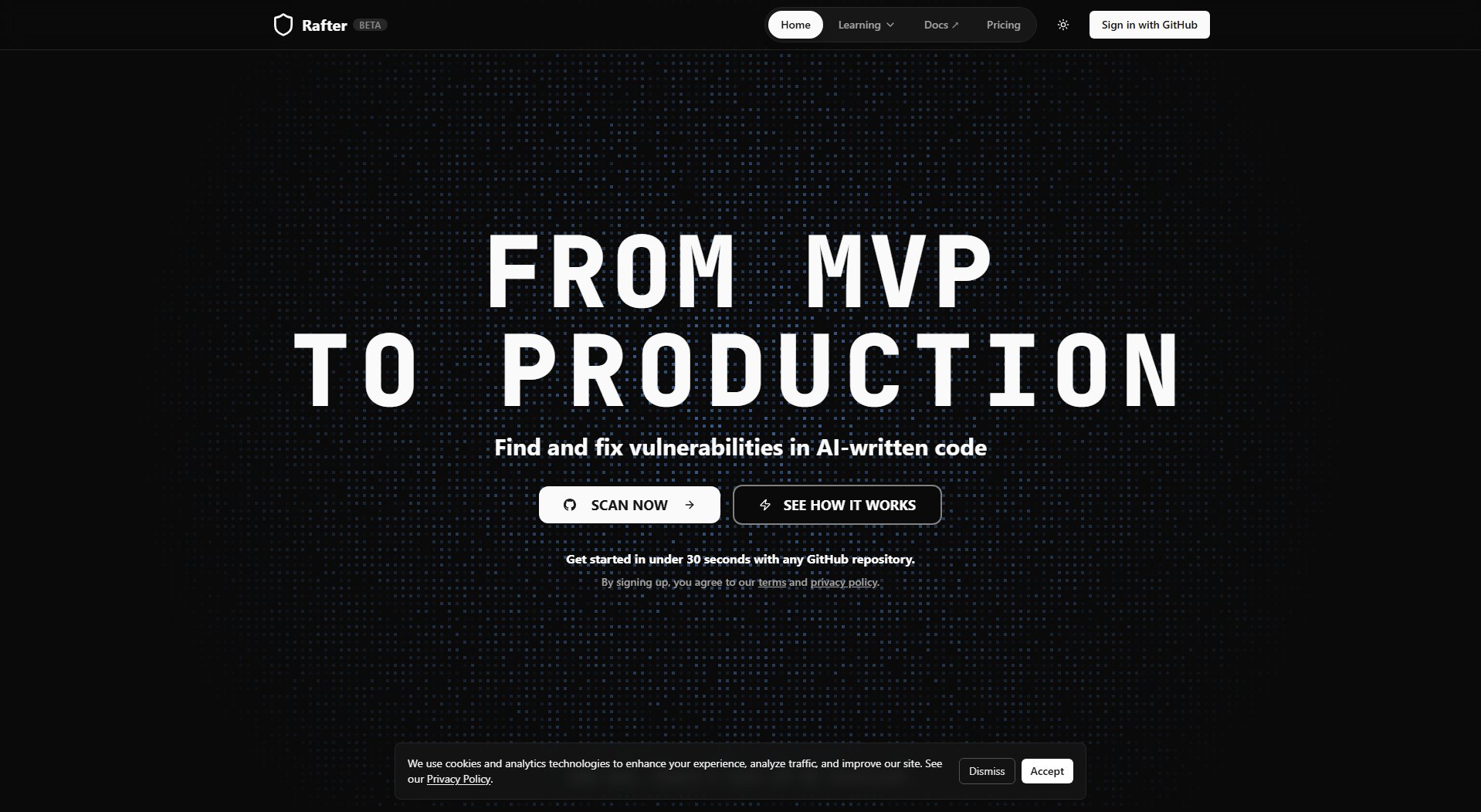Rafter
Simple security for everyone who builds
What is Rafter? Complete Overview
Rafter is a security tool designed to find and fix vulnerabilities in AI-generated code. It provides a simple yet powerful solution for developers, teams, and enterprises who rely on AI for coding assistance. The tool ensures that the code produced by AI is secure, reliable, and free from common vulnerabilities that could compromise applications. Rafter is particularly useful for those who integrate AI coding tools into their workflow but need assurance that the output is safe for production environments. With its user-friendly interface and robust security checks, Rafter makes it easy to maintain high security standards without slowing down development.
Rafter Interface & Screenshots

Rafter Official screenshot of the tool interface
What Can Rafter Do? Key Features
Vulnerability Detection
Rafter scans AI-generated code for common security vulnerabilities, including injection flaws, insecure dependencies, and improper error handling. It uses advanced algorithms to identify potential risks before they become issues.
Automated Fixes
The tool not only identifies vulnerabilities but also suggests or implements fixes automatically. This reduces the manual effort required to secure code and speeds up the development process.
Integration with AI Tools
Rafter seamlessly integrates with popular AI coding assistants, providing real-time security feedback as code is generated. This ensures that vulnerabilities are caught early in the development cycle.
User-Friendly Dashboard
The dashboard provides a clear overview of security issues, fixes applied, and overall code health. It’s designed to be intuitive, making it accessible for developers of all skill levels.
Continuous Monitoring
Rafter continuously monitors code for new vulnerabilities, even after initial fixes are applied. This ensures ongoing security as code evolves and new threats emerge.
Best Rafter Use Cases & Applications
AI-Assisted Development
Developers using AI tools like GitHub Copilot can integrate Rafter to ensure the generated code is secure. This is especially useful for teams working on sensitive applications, such as financial software or healthcare systems.
Code Review Automation
Rafter can be used to automate part of the code review process, reducing the burden on human reviewers and catching security issues that might otherwise be overlooked.
Educational Purposes
Students and beginners learning to code with AI can use Rafter to understand common security pitfalls and how to avoid them, fostering better coding practices from the start.
How to Use Rafter: Step-by-Step Guide
Sign in to Rafter using your GitHub account to get started. This allows the tool to access your repositories and scan AI-generated code.
Connect Rafter to your preferred AI coding assistant. The tool supports integrations with major AI coding platforms for seamless security checks.
Run a scan on your AI-generated code. Rafter will analyze the code for vulnerabilities and provide a detailed report of any issues found.
Review the suggested fixes. Rafter offers automated solutions for most vulnerabilities, which you can apply with a single click.
Monitor your code’s security over time. Rafter provides continuous updates and alerts for new vulnerabilities, ensuring long-term protection.
Rafter Pros and Cons: Honest Review
Pros
Considerations
Is Rafter Worth It? FAQ & Reviews
Yes, Rafter is currently free during its beta phase. Pricing for future plans will be announced later.
Rafter integrates with popular AI coding assistants, including GitHub Copilot. More integrations are planned for the future.
Rafter uses advanced algorithms to scan code for common security issues, such as injection flaws and insecure dependencies, based on established security best practices.
While Rafter is optimized for AI-generated code, it can also scan and secure manually written code, though some features may be more tailored to AI outputs.
Support is available through the Help Center and feedback forms on the Rafter website during the beta period.